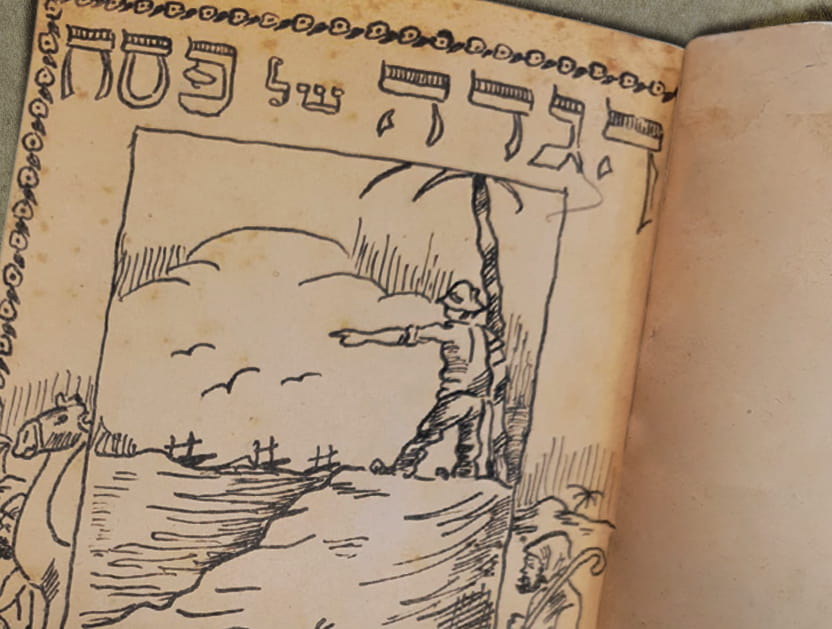Educational games [electronic resource]
להגדלת הטקסט להקטנת הטקסט- ספר
| כותר |
Educational games [electronic resource] : design, learning, and applications / Frej Edvardsen and Halsten Kulle, editors. |
|---|---|
| מהדורה |
1st ed. |
| מוציא לאור |
New York : Nova Science Publishers |
| שנה |
c2010 |
| הערות |
Bibliographic Level Mode of Issuance: Monograph Includes bibliographical references and index. English |
| הערת תוכן ותקציר |
Intro -- EDUCATIONAL GAMES: DESIGN, LEARNING AND APPLICATIONS -- EDUCATIONAL GAMES: DESIGN, LEARNING AND APPLICATIONS -- CONTENTS -- PREFACE -- Chapter 1PERSUASION ON-LINE AND COMMUNICABILITY:THE DESTRUCTION OF CREDIBILITY IN THEVIRTUAL COMMUNITY AND COGNITIVE MODELS -- Abstract -- Introduction -- 2. Techniques and Methods -- 3. Models and Guidelines for Interactive Design -- 3.1. Professionals for Cognitive Models and Design -- 3.2. Models and Metaphors: Empathy and Inference for Interfaces -- 3.3. Models for Interactive Users: Diachronic Evolution -- 4. From Human-Computer Communication to Human-ComputerInteraction -- 4.1. Competence of the Interactive System and the User's Change ofBehaviour -- 5. Persuasion: Main Variables of Communication in the VirtualCommunity -- 6. Persuasion Complexity: Dynamic Persuader and InteractivePersuaded Person -- 7. Persuasion, Education and New Technologies -- 7.1. Educational Websites and Credibility Factors -- 7.2. A Set of Main Components that Foster the Validity of on-LineEducational Information through Persuasion -- 8. Lesson Learned and Conclusion -- Acknowledgements -- Annex Section -- Annex #1: First Profile of the Star Enunciator and Heuristic Table of thePersuasion Evaluation -- Annex #2: Examples of the Destruction of Credibility in theVirtual Community -- Annex #3: Dynamic Persuader and Stadistical Information forUsers Manipulation -- Annex #4: Conformity Obtainment Techniques in Daily LifeSituations -- Annex #5: Dynamic Persuader and Statistical Information forInteractive Persuaded Person -- References -- Chapter 2EDUCATIONAL GAMES AND COMMUNICABILITY:DESIGN, LEARNING AND INTERACTIVEAPPLICATIONS -- Abstract -- Introduction -- Education and Children -- New Technologies in the Classrooms: The Context Factor -- Hypertext, Multimedia and Hypermedia Off-Line:Hardware and Software Evolution. Computer Graphics and Interaction in Video Games -- Internet, Contents and Video Games for Children -- Edutainment -- Classification of the Video Games -- Role and Adventure Games -- Action Games -- Simcity and the Sims: A New Era for Video Games -- Communicability, Usability and Heuristic Assessment:Obtainment of the Metrics -- Heuristic Assessment Modalities -- Lesson Learned -- Conclusions -- Acknowledgements -- Appendix #1: Examples of Metrics -- 1. Behaviour Animated Actors/Characters -- 2. Dyadic -- Example #1 -- Example #2 -- Appendix #2: CD-ROM, DVD and Website -- References -- Chapter 3PLAYING TO LEARN: EXPERIENCES IN VIRTUALBIOLOGY ENVIRONMENTS -- Abstract -- Introduction -- Organisation in the Chapter -- Context -- The Conceptual Framework of Play Applied in This Chapter -- Playing to Learn -- Motivating Learning through Play -- Self-Regulated Learning -- Problem-Solving -- Opportunities to Solve Some Challenges in Science Educationthrough Playing in Virtual Environments -- Playing Science Games -- Implementing a Game into a School Curriculum -- Considerations in Designing Educational Games in Virtual Spaces -- Virtual Environments (VE) -- Virtual environments and micro worlds in Zadarh -- Micro-worlds -- Virtual Realities (Vrs) (Activities in Micro-Worlds in Ves) -- Virtual Realities or Practical Work? -- Evaluating a Game for Learning -- Overview of Methods to Collect Information -- 1. Technical Issues -- 1.1. Skills / Knowledge Required -- 1.2. Compatibility of the Programme with School ICT / Computers -- 1.3. Help and Documentation -- 1.4. Design and Navigation -- 1.5. Level of Use -- 2. Curriculum Issues -- 2.1. Subject Related Skills, Critical Thinking, Problem Solving Skills, GeneratingHypotheses and testing them, Application of Number, Etc). -- 2.2. Content. 2.3. Tasks and Exercises - It is Desirable to Incorporate in a Game Tasks andProblems to Solve -- 3. Interactivity and Enjoyment -- 3.1. Is the Game Genuinely Interactive? -- 3.2. Does the Programme Allow Construction of Knowledge and New Ideas? -- 3.3. Does the Programme Allow Players to Introduce their Own Ideas or to DesignOwn Tasks? -- 3.4. Would Users Enjoy Using the Programme? Enjoyment implies that Usersbecome absorbed into the Programme. -- 4. Virtual Environments -- 5. Special Needs -- 6. Evaluation against How a Game Represents the Nature of a Subject andWhether It Can Achieve the Desired Outcomes -- 6.1. Learning Outcome 1: Scientific Inquiry and Problem-Solving Skills (ScienceProcess Skills) -- 6.2. Learning Outcome 2: Nature of Scientific Knowledge -- 6.3. Learning Outcome 3: Constructing and Applying Scientific Knowledge -- 6.4. Learning Outcome 4: Science, Technology, Society, and the Environment -- 6.5. Outcomes that cannot be Duplicated or done the same way by other (Non-Computer-Based) Resources? E.G., Enjoyment, Etc. -- 7. Students' Evaluation of the Game (Individual or Focus Groups) -- 7.1. Allocate a Score for Each of These -- 7.2. What Events do you remember from using this Programme? -- 7.3. What Information do you remember from using this Programme? -- 7.4. What Activity in the Programme teaches you Most? -- 7.5. What would you add or take away from this Programme? -- Students' Evaluation of Zadarh -- Conclusion -- Some Issues for Developers -- References -- Chapter 4THE ROLE OF CONTEXTUAL INTERFERENCEAND MENTAL ENGAGEMENT ON LEARNING -- Abstract -- Introduction: Games and the Transfer of Knowledge -- Learning and Student Engagement -- Measuring and Assessing Mental Engagement -- The Contextual Interference Effect -- Converging Evidence for the Role of Contextual Interferencein Learning -- Embodied Learning Research. Cognitive Development Research -- Play Research -- Physical Rehabilitation Research -- Physical Activity and Executive Function -- The Learning Curve and Mental Engagement -- Physical Activity Games: Connecting the Science to the Teachingof Physical Education -- Historical Overview -- The Beginning -- The Late 20th Century -- Physical Education Today: What Was Old Is New Again -- Instructional Prototype -- Qualified Instructors -- Selection of Appropriate Games -- Game Design -- Monitoring Skill Development -- Conclusion -- References -- Chapter 5LEARNING TO GAME AND GAMING TO LEARN:A PROCESS-ORIENTED PEDAGOGYFOR COLLABORATIVE GAME-BASED LEARNING -- 1. Introduction -- 2. Processes Underlying This Approach -- 3a. Creating a Stimulating Gaming Environment -- 3b. Good Games for Learning -- 4. Managing the Social Experience -- 5. Facilitating Contribution and Knowledge Building -- 6. Conclusion -- References -- Chapter 6INTELLIGENT EDUCATIONAL GAMES:A CONSTRAINT-BASED APPROACH -- Abstract -- Introduction -- Constraint-Based Intelligent Tutoring Systems -- Its and Games -- Wetas: An Intelligent Tutoring Shell -- The Domain Structure -- The Domain Model -- Problem Representation -- Scaffolding and Parsing -- The Wetas RPC Interface -- Language Builder: A Simple Its Game -- Building Intelligent Games with Greenmind -- Turtle's Rare Ingredient Hunt -- A Sorting Tutor -- Conclusion -- Acknowledgements -- References -- Chapter 7NATURAL MULTIMODAL INTERACTIONIN COLLABORATIVE VISUALIZATION -- Abstract -- 1. Introduction -- 1.1. Navigating Visualization: Beyond WIMP Interfaces -- 1.2. Multimodality: Benefits and Challenges -- 2. State-of-the-Art and the Evolution of Multimodal Visualization -- 2.1. Multimodal Interaction for Immersive Visualizations in Virtual andAugmented Reality Environments. 2.2. The Role of Gesture in Multimodal Interaction and Visualization -- 2.3. Perception, Learning and Multimodal Interaction -- 2.4. Games and Visualization -- 3. Mutual Disambiguation -- 4. Case Studies -- 4.1. MAVEN -- 4.2. VITA -- 4.3. Charter -- 4.4. Leveraging Multimodal Redundancy for More Natural Interfaces -- 4. Summary and Overview -- 5. Conclusion -- References -- Chapter 8WORKING WITH CULTURAL DIFFERENCES:A CASE STUDY IN MULTICULTURALTEAMWORK USING A 3DCVE -- 1. Introduction -- 2. Defining Cultural Learning -- 2.1. Cultural learning in the Classroom -- 3. Teamwork -- 4. Activity Theory -- 5. The Babel Project -- 5.1. Stakeholders -- 6. Analysis of Cross-Cultural Issues Raised -- 6.1. Modes of Communication -- 6.1.1. Local Communication -- 6.1.2. Email Text and File Exchange -- 6.1.3. MSN Text-Chat -- 6.1.4. Scanned Sketches -- 6.1.5. AWs Modelling -- 6.1.6. Serendipitous Meetings in AWs -- 6.1.7. Bulletin Board Signs in Aws -- 6.1.8. Videoconferencing -- 6.2. Finding a Common Language -- 6.3. Working with Cultural Differences -- 6.4. Conflict Resolution -- 6.5. Transformative Outcomes -- 7. Discussion: Socio-technical Organisation -- 8. Conclusion -- 9. Recommendations for Future Multicultural 3DCVE Exercises -- References -- Chapter 9PATTERNS FOR THE DESIGNOF EDUCATIONAL GAMES -- Abstract -- Introduction -- Patterns and Catalogues of Patterns -- Patterns in Educational Games -- Patterns Based on Scripts -- The Story Patterns Study -- Story Patterns and Gameplay Patterns -- Story Patterns and Didactical Patterns -- Integration of Story, Gameplay, and Learning -- Application and Future Work -- References -- Chapter 10EDUCATIONAL COMPUTER GAMESAND THEIR APPLICATIONTO DEVELOPMENTAL DISABILITIES -- Abstract -- Introduction: Educational Computer Games -- A Brief History of Educational Computer Games -- A Simple Computer Game: AVAART∗. Psychological Assessments with avaART. |
| סדרה |
Education in a competitive and globalizing world |
| היקף החומר |
xiii, 385 p. : ill. |
| שפה |
אנגלית |
| מספר מערכת |
997010712548505171 |
תצוגת MARC
יודעים עוד על הפריט? זיהיתם טעות?

 כניסה עם גוגל
כניסה עם גוגל
 כניסה עם פייסבוק
כניסה עם פייסבוק



